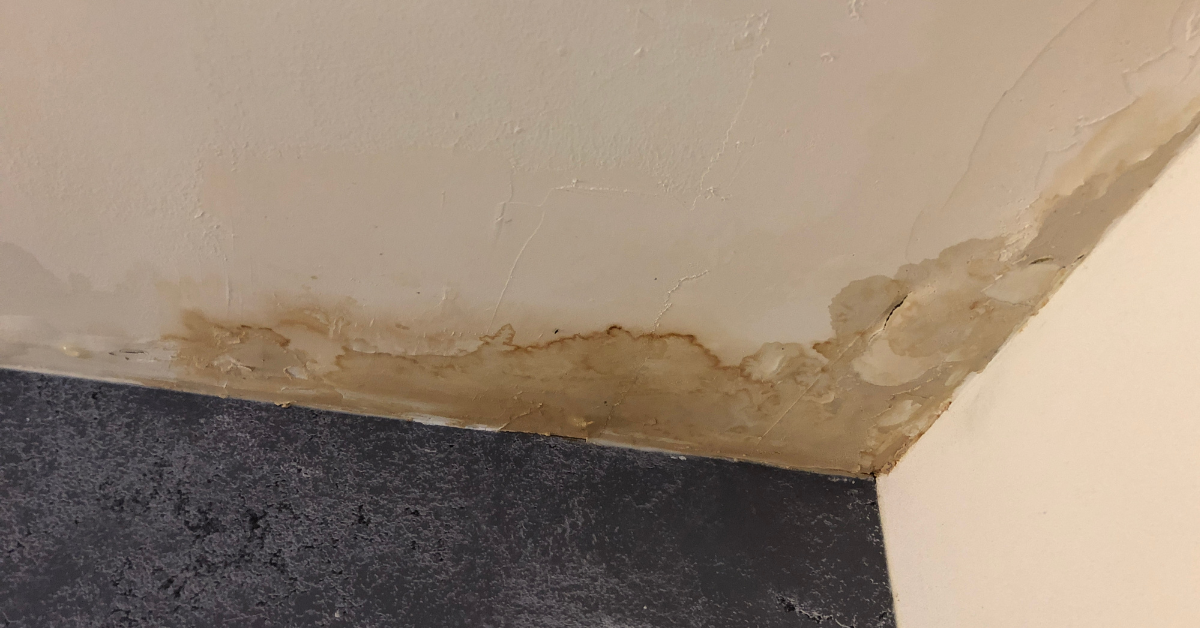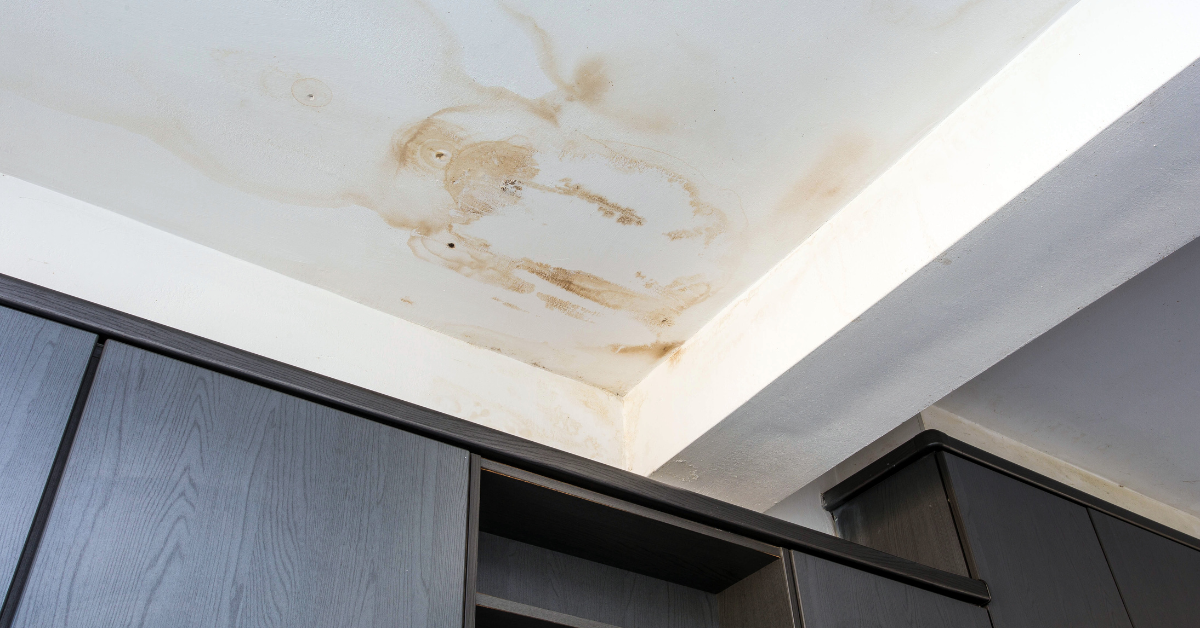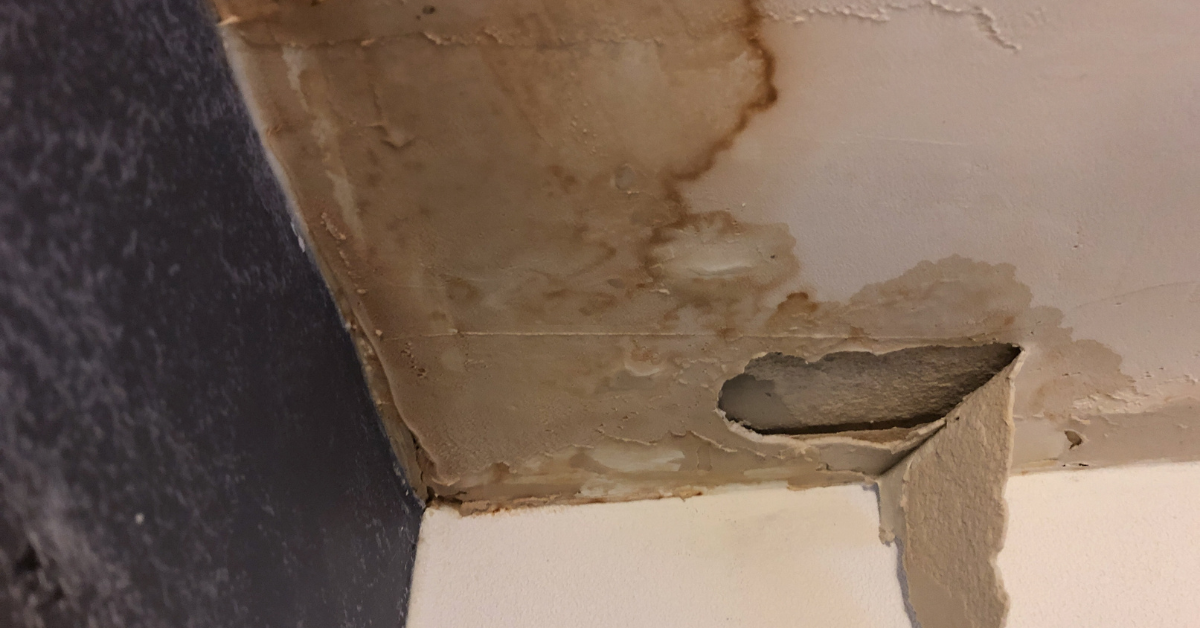Table of Contents
Discovering water leaking from your ceiling can be alarming. It can cause costly damage to your home and pose serious risks such as mold growth, weakened structural integrity, and even electrical hazards. Water leaks can originate from various sources, including plumbing failures, roof damage, or condensation buildup.
Ignoring the issue can lead to further complications, such as wood rot, wall damage, and increased utility bills due to inefficient heating or cooling. Understanding the underlying causes and responding promptly can save homeowners thousands in repairs. In this guide, we’ll explore the common causes of ceiling leaks, how to detect them, quick actions to take, and the best repair solutions, whether DIY or professional.
Signs of Water Leaking from the Ceiling
Water leaks don’t always appear as obvious dripping. Sometimes, the warning signs are subtle and can go unnoticed until significant damage has occurred. Here’s what to watch out for:
- Visible Water Drips: The most evident sign of a leak is water actively dripping from the ceiling, often in small droplets or steady streams.
- Water Stains & Discoloration: Yellow, brown, or copper-colored stains on the ceiling indicate prolonged water exposure, often originating from above.
- Sagging Ceiling: Excess water weight weakens the ceiling structure, causing it to bow or sag, which could lead to collapse if not addressed.
- Peeling or Bubbling Paint: Trapped moisture causes paint to separate from the surface, forming bubbles or peeling sections.
- Musty Odors & Mold Growth: A persistent damp smell or visible mold patches suggest prolonged moisture issues that can impact indoor air quality and health.
- Ceiling Light Fixtures Holding Water: If you notice water inside ceiling light fixtures or electrical outlets, it’s a sign that water is pooling before dripping down, which poses a serious electrical hazard.

water leaking from ceiling
Common Causes of Ceiling Leaks
Understanding the source of your leak is the first step in fixing the problem. Ceiling leaks can be categorized into internal (plumbing-related) and external (roof-related) causes. Each type requires a different approach for detection and repair.
1. Plumbing Leaks (Internal Leaks)
- Burst Pipes: Pipes can crack due to freezing temperatures, high water pressure, or wear and tear over time.
- Leaking Bathroom Fixtures: Faulty toilet seals, cracked shower caulking, or loose faucets can let water seep into floors and ceilings below.
- Faulty Appliance Hoses: Washing machines, dishwashers, and water heaters may have loose or broken hoses that allow leaks. Regular maintenance can help prevent these issues.
- HVAC System Leaks: Air conditioning units that lack proper drainage can cause condensation buildup, leading to leaks that may seem like ceiling damage.
2. Roof & Attic Issues (External Leaks)
- Damaged or Missing Roof Shingles: Heavy storms, strong winds, or aging roofs can cause shingles to crack or detach, allowing rainwater to seep through and collect in the attic.
- Clogged Gutters: Overflowing water from clogged gutters can leak into the attic and down the walls, eventually affecting ceilings inside the house.
- Ice Dams in Winter: Melting snow refreezing at the roof edge can force water under the shingles, leading to roof leaks that damage ceilings over time.
- Cracked Roof Flashing & Vents: Weak spots around chimneys, vents, or skylights can become entry points for water, especially during heavy rainfall.
- Roof Punctures & Poor Seals: Small holes caused by rodents, tree branches, or improper installation can let water seep through over time.
3. Condensation Issues (Often Mistaken for Leaks)
- Poor Ventilation in Bathrooms & Kitchens: Excess steam can condense on ceilings, mimicking a leak. This is especially common in poorly ventilated rooms with no exhaust fans.
- HVAC & Air Duct Leaks: Uninsulated air ducts can cause condensation to form, leading to water stains and ceiling damage.

water leaking from ceiling
Immediate Steps to Take When You Notice a Leak
When you discover water leaking from your ceiling, quick action is crucial to minimize damage and prevent further issues. Taking the right steps immediately can save you from costly repairs and potential safety hazards. Follow these essential actions to mitigate the damage and address the source of the leak as soon as possible.
- Contain the Water: Place buckets or towels under the leak to prevent floor damage and slip hazards.
- Move Furniture & Electronics: Protect valuable items from water exposure to prevent costly damage.
- Locate the Leak Source: Determine if it’s coming from a plumbing issue or the roof by checking above the leak area.
- Puncture Bulging Ceiling Areas (if safe): Helps release trapped water in a controlled manner and prevents further spreading.
- Turn Off Water Supply (if plumbing-related): Shutting off the main water supply can stop further leakage and prevent water damage from worsening.
- Shut Off Electricity (if necessary): Water exposure to wiring can pose electrical hazards, increasing the risk of fires or electrocution.
How to Fix a Ceiling Leak (DIY & Professional Solutions)
Addressing a ceiling leak requires identifying the root cause and applying the appropriate fix. Whether the leak stems from internal plumbing or external roof issues, taking the right approach can prevent further damage and costly repairs. Here’s how to handle different types of leaks effectively.
1. Fixing Internal Leaks (Plumbing Issues)
- Toilet & Sink Leaks: Tighten plumbing fittings, replace worn-out wax rings, and inspect under-sink connections.
- Shower Leaks: Re-caulk joints, seal gaps, and replace any leaking pipes.
- Appliance Leaks: Inspect and replace hoses or fittings as needed to prevent future issues.
2. Fixing External Leaks (Roof & Gutter Issues)
- Clear Clogged Gutters: Regular cleaning prevents overflow into the attic and onto walls.
- Replace Missing Shingles: This prevents rainwater from seeping into your home.
- Seal Roof Flashing: Ensures no leaks occur around vents, chimneys, or skylights.
- Install Ice Dam Prevention Measures: Heating cables or ice shield membranes can prevent water backups in winter.
3. Repairing Ceiling Damage
- Dry Out the Area: Use dehumidifiers, fans, and ventilation to remove moisture.
- Replace Water-Damaged Drywall: If sagging, moldy, or severely weakened, install new drywall.
- Repaint & Seal: Once fully dry, repaint with mold-resistant paint to prevent future issues.

water leaking from ceiling
Preventing Future Ceiling Leaks
Taking proactive measures can save you from costly repairs in the future:
- Regular Roof Inspections: Identify and fix vulnerabilities early to prevent leaks.
- Clean Gutters & Downspouts: Prevents water buildup that could lead to leaks inside.
- Monitor Plumbing Connections: Check pipes, fittings, and appliance hoses for leaks.
- Seal Bathroom Fixtures Properly: Reapply caulking and grout as needed to prevent moisture seepage.
- Improve Home Ventilation: Reduces condensation-related moisture buildup and prevents mold growth.
Conclusion
Water leaks from ceilings require immediate attention to prevent costly damage and safety hazards. Identifying the source of the leak, whether from plumbing, roofing, or condensation, is essential for effective repairs. Regular maintenance, such as checking plumbing, cleaning gutters, and ensuring proper ventilation, can help prevent future leaks.
If you notice water stains, sagging ceilings, or active leaks, take quick action to address the issue. Whether through DIY fixes or professional help, resolving leaks promptly can save time, money, and stress. Stay proactive to keep your home safe, dry, and structurally sound.
